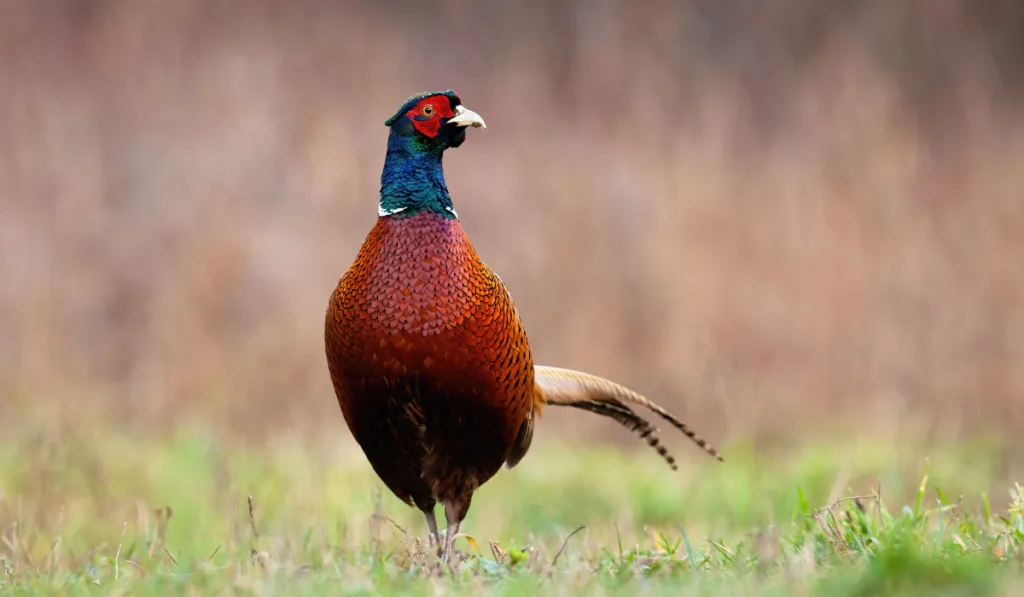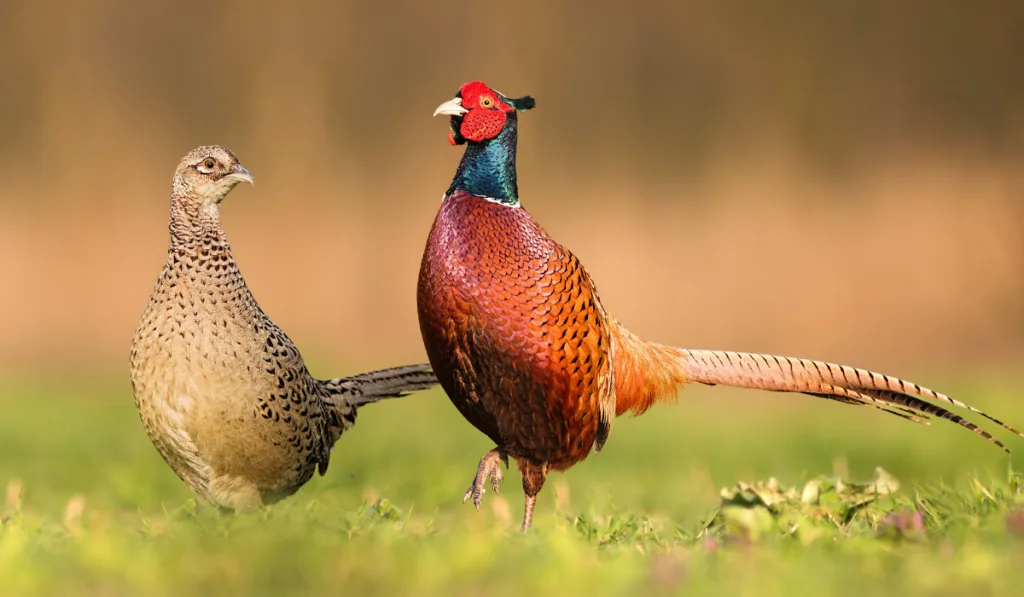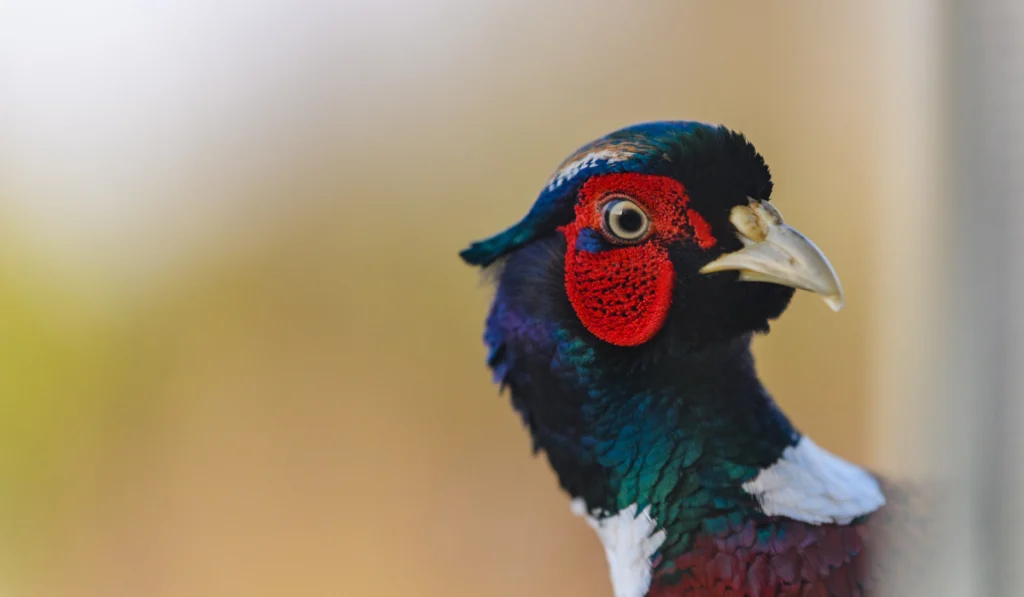If you know male pheasants quite well, then you must know how strongly territorial they are.
But does this trait of theirs mean they cannot be kept together? Let us see.
Can you keep male pheasants together? Male pheasants can be kept together, but only if there is no female in their midst.
In the presence of a female pheasant, male pheasants will fight each other in a potentially lethal brawl.
Besides the presence of a female, the introduction of the male pheasants to each other also matters.

In the rest of this article, we go into the details of keeping male pheasants together. We also discuss why pheasants become aggressive and much more.
Table of Contents
Keeping Male Pheasants Together
You can keep male pheasants together. But the chances of this cohabitation being successful is higher in the absence of female pheasants.
Male pheasants are typically territorial, and in their breeding season, this territoriality is more pronounced.
During breeding season, male pheasants become more aggressive to mark their territory and make claims over hens.
They will screech, crow, squawk, and cackle as they try to keep other pheasant roosters away. When triggered, they may fight an intruder, and such fights are potentially deadly.
However, in the absence of a pheasant hen, the chances of the breeding season aggression are lower. There will be no hen to compete over.
The absence of a female pheasant is not the only consideration for the successful cohabitation of male pheasants.
The timing of the introduction matters too.
If one male pheasant has been alone in the coop for too long, the introduction of other male pheasants may brew trouble.
The first pheasant may consider the coop his territory, and the coming of other pheasants would be seen as intrusion.
Of course, if this is the case, then the first pheasant will react accordingly.
So, it is better if the male pheasants are brought into the coop at the same time. This way, they can create a working pecking order amongst each other from the start.
How Many Female Pheasants Should Be Kept per Male?

Male pheasants are polygynous, and as we mentioned earlier, they typically fight over pheasant hens during their breeding season.
Now, this might get you wondering what the ideal sex ratio for pheasants is.
There appears to be no standard for how many female pheasants you should keep per male.
However, a study showed that a ratio of 6 to 10 female pheasants to 1 male was commonplace amongst farmers with outdoor flocks.
The study also revealed that pheasant farmers with controlled flocks typically do not go above 10 females per male.
Interestingly, in the referenced study, a maximum ratio of 18 female pheasants to 1 male was used. So, while farmers commonly stop at 10 to 1, it might be possible to keep up to 18 female pheasants per male.
Housing Requirements for Male Pheasants
When keeping pheasants, especially males, you should house them properly.
If you do not, you may not be able to keep them successfully. When setting an aviary up for your pheasants, consider the following:
- When setting up a coop for pheasants, ensure that each bird gets at least 20 square feet of space.
If you huddle pheasants up in their aviary, you may have to deal with cannibalism. - You would do well to set the aviary up in an area close to natural vegetation. But if that is not available, you can try planting grains like oats and millets close to the aviary.
- Do not set their coop up in a place previously used by chickens in the previous 3 years.
Chickens carry disease-causing parasites, like Blackhead disease, without showing symptoms. If a carrier chicken deposits such parasites in the soil, the pheasants may get infected if they live in the same place.
Unlike chickens, they may show symptoms of the disease. - Provide fencing around the coop to keep predators out. The fence should be at least 6 feet high, and it should be fitted about 10 to 20 inches into the ground.
At such depth, it would be difficult for the predators to dig beneath the fence.

5. Cover the soil in the pheasant coop with a sand base about 4 inches thick. Sand is the better option because it is easier to clean and disinfect.
The best type of sand to use in the coop is sterilized sand (the kind used in children’s sandbox). Alternatively, you can mix lime with some builder’s sand.
The lime will hinder bacterial growth while suppressing odor.
6. Ensure you keep the sand base in place by creating borders around it.
7. Cover parts of the coop with roofing material, palm fronds, or tarp to provide shade for the pheasants.
8. Ensure the sides of the aviary are covered with wire netting or nylon netting. You may combine both if necessary.
Final Take
As long as there are no female pheasants amongst them, male pheasants might live together peacefully.
But to further ensure the success of such cohabitation, ensure the male pheasants are introduced into the coop at the same time.
Resources
- https://www.backyardchickens.com/threads/2-male-pheasants-together.1303916/
- https://science.jrank.org/pages/5132/Pheasants.html
- https://www.westovervets.co.uk/pheasant-attack/
- https://www.sciencedirect.com/topics/agricultural-and-biological-sciences/pheasants
- https://www.backyardchickens.com/threads/can-male-pheasants-be-kept-together-if-there-are-no-hens.933298/
- https://www.sciencedirect.com/science/article
- https://www.outdoorhappens.com/how-high-should-a-chicken-fence-be-to-keep-chickens-in-and-predators-out
- https://meyerhatchery.zendesk.com/hc/en-us/articles/360010072011-Ornamental-Pheasant-Care
